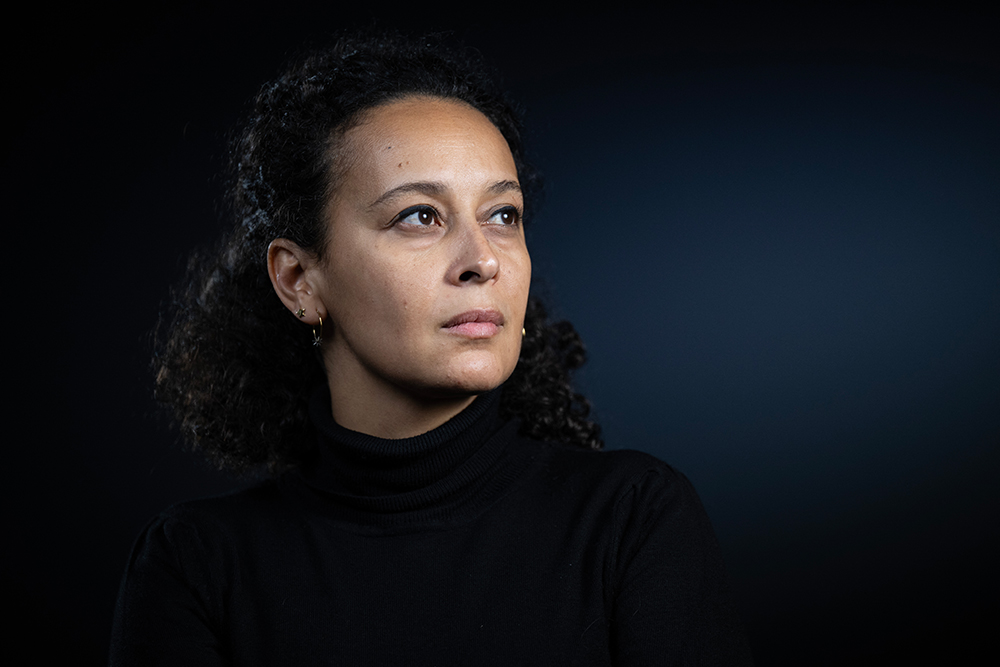
It was a relatively minor episode in a period marked by the killing of two African presidents, months of massacres in churches, schools and sports stadiums, a biblical exodus by much of the Hutu population, a cholera outbreak in refugee camps established in the neighbouring Democratic Republic of Congo (DRC), and a rebel takeover of the country. But it mattered a great deal to Beata Umubyeyi Mairesse, the author of this book, as she was one of the children evacuated in June 1994. At 15, she did not meet the criteria stipulated by the convoy’s organisers, so she and her mother hid under a tarpaulin sat upon by the smaller children as the trucks worked their painstaking way through a series of road blocks manned by Hutu militiamen hungry for fresh victims.
For years, Mairesse, who is based in France, processed this experience by writing fiction and giving talks to school-children. But she finally felt able to expose in non-fiction form the kernel at the heart of all her work: that convoy. She spent years tracking down the aid workers who organised the trucks, the children evacuated alongside her, and the photographers and cameramen who captured the incident.
There’s a long tradition in both text and film in which artists probe a single, solitary event – either by exploring a range of different perspectives or by working through layers of detail – to strike creative gold. Think Rashomon. The disappointment with The Convoy is that, despite the extraordinary amount of work Mairesse puts into her investigation, this never quite happens. While her account of spending weeks hiding in hotel rooms and cellars prior to departure is nailbiting, the material she digs out about the convoy itself is often dull and repetitive. It fails to illuminate what is rightly regarded as one of the most extraordinary and horrifying episodes of mass slaughter in 20th-century history.
We do learn that the prefect of Butare, Sylvain Nsabimana, was a conflicted individual. Working for an administration bent on eliminating Tutsis (regarded, because of the ethnic identity they shared with the Rwandan Patriotic Front, as the enemy within), he nonetheless repeatedly negotiated with the checkpoint killers, persuading them to let the convoy through. Sacked on his return to Butare, he was still prosecuted for genocide and crimes against humanity by the International Criminal Tribunal for Rwanda. But Nsabimana remains a mystery, and the writer’s interest in the aid workers who organised the convoy, the children who helped save her, and the journalists who covered the event, also becomes submerged by her mounting anger and irritation at being denied what she craves: photographic evidence of her presence on the convoy.
She returned repeatedly to her contacts in search of slides, negatives and footage that she is convinced simply must exist, and her book eventually becomes a disquisition on the issue of who ‘owns’ the images of individuals caught up in era-defining events. It is also a sharp critique of the carelessness of the western gaze when trained on victims in the global south: ‘All those images of us, of our dead, of their remains, continue to be broadcast without our being asked for our opinions.’
As a reporter who arrived in Rwanda a month after Mairesse was evacuated, I was part of the media whose stance she assesses and finds wanting. The questions she raises haunt many of the photographers and cameramen I worked with on these kinds of stories. They have often gone to great lengths in later life to reconnect with subjects filmed decades earlier. They have also contributed their material to national archives established in once-turbulent states.
Mairesse’s attitude is in tune with our profoundly individualistic times, in which nothing counts for more than subjective experience. Yet I don’t share it. A woman giving birth might understandably feel she ‘owns’ a photograph taken at such a deeply personal moment. But did those who lived through the bombing of Hiroshima, the Normandy landings, the pogroms in European Jewish ghettos or any of the events that have moulded our epoch really have a special claim to the images in which they appeared? The first duty of reporters and photographers recording those events is surely to both history and humanity itself, in that every one of them hopes that by doing a decent job they might try to ensure such horrors would never be repeated. News coverage can’t be filtered through the lens of personal therapy, however traumatising it proves for the individuals involved. When Mairesse asks ‘Do those photographs not belong to us?’, my answer would be: ‘No, I’m afraid not.’

She talks about wanting to ‘change the narrative, to give it more complexity’, being understandably outraged at the way in which images of cholera-stricken Hutu refugees were at one point conflated with those of Tutsi genocide victims by the western media. But her own account is guilty of the same sin. Sticking loyally to a narrative laid down by the government established in Kigali after the RPF takeover of 1994, she never once, for example, mentions the hundreds of thousands of Hutu refugees later massacred in the forest of the DRC by the new Rwandan army – just one of many tactful omissions.
The English translation of her book appears just as the M23, a rebel movement supported by Rwanda, is capturing towns in DRC and filling morgues with corpses. The grim truth is that no entity has instrumentalised the memory and images of the 1994 genocide more cannily than the government in Kigali, which constantly cites the threat of a new genocide against Congolese Tutsis as justification for its fifth military intervention on its neighbour’s soil.
Mairesse’s memoir is one of many by Rwandans who survived the genocide. Few African crises have been as thoroughly recorded by their participants. These include accounts by Hutus who saw fellow refugees being killed by the new Rwandan army in the DRC and of Tutsis who once fought bravely for the RPF but became so disgusted by the movement they walked into exile.
These reports could not be further from the white, western gaze. As the area explodes once more into violence, Mairesse’s memoir is certainly worth reading – but only as one of a range of testimonies shedding light on this disturbing, complex story.






Comments